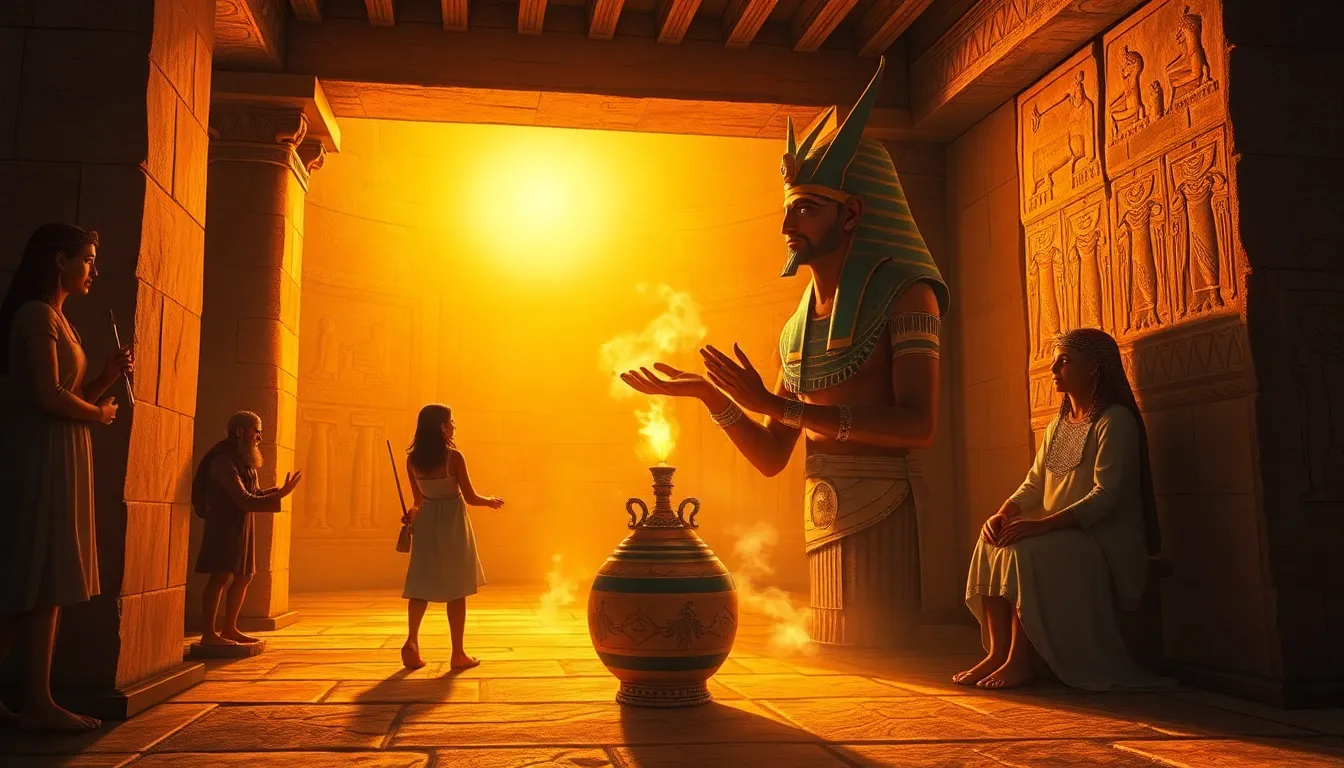The Origins of the Sacred Offerings: Myths of Gratitude and Devotion
I. Introduction
Sacred offerings can be defined as gifts or tributes presented to deities, spirits, or ancestors as acts of reverence, gratitude, or supplication. These offerings range from food and flowers to more symbolic gestures and rituals, and they play a critical role in many religious and spiritual practices across the globe.
The importance of gratitude and devotion is a common thread woven through various cultures, providing a means of connecting with the divine and acknowledging the blessings one receives. This exploration delves into the myths surrounding sacred offerings, shedding light on their origins, significance, and evolution.
II. Historical Context of Sacred Offerings
The practice of making sacred offerings is as old as human civilization itself. Early societies, including the Egyptians, Sumerians, and Indigenous tribes, engaged in rituals that involved offerings to appease gods and spirits, seeking favor or guidance in return.
- A. Early civilizations and their practices: In ancient Egypt, offerings were made to gods like Osiris and Isis, often involving food, incense, and other valuable items placed in tombs or temples.
- B. Evolution of offerings through time: Over the centuries, the nature and purpose of offerings evolved, reflecting changes in beliefs, societal structures, and the understanding of the divine.
- C. Key archaeological findings related to sacred offerings: Excavations at sites like the Valley of the Kings and various Mesopotamian temples have uncovered numerous artifacts that highlight the importance of offerings in ancient rituals.
III. Mythical Narratives Surrounding Offerings
Myths surrounding sacred offerings often reflect deep-seated beliefs about the nature of the universe, creation, and the relationship between humanity and the divine.
- A. Common themes in creation myths: Many cultures feature creation myths that involve offerings to the gods, symbolizing the reciprocal relationship between the divine and the human realm.
- B. Stories of divine beings and their expectations: Gods are often depicted as having specific desires for offerings, which can include the types of food, the manner of presentation, or the frequency of the offerings made.
- C. The role of offerings in mythological tales: Offerings frequently act as pivotal plot points in myths, showcasing the consequences of neglecting to honor the gods and the rewards of devotion.
IV. Cultural Variations in Sacred Offerings
The practice of making sacred offerings varies widely across different cultures and religions, each with its own unique customs and significance.
- A. Comparison of practices across major religions: For example, in Hinduism, the ritual of puja involves offerings of flowers, food, and incense to deities, while in Christianity, the Eucharist is a sacramental offering representing the body and blood of Christ.
- B. Regional traditions and their significance: Indigenous cultures often have offerings tied to seasonal changes, honoring ancestors and nature spirits, reflecting their deep connection to the land.
- C. The impact of local beliefs on offering practices: Local traditions can influence the types of offerings made, showcasing the adaptability of sacred practices to fit cultural contexts.
V. Psychological and Social Aspects of Offerings
The act of making offerings extends beyond mere ritual; it serves important psychological and social functions within communities.
- A. Offering as a form of communal bonding: Participating in collective offerings can strengthen community ties, fostering a sense of belonging and shared purpose.
- B. Psychological motivations behind giving offerings: People often make offerings as a way to express gratitude, seek forgiveness, or request blessings, reflecting their inner emotional landscapes.
- C. The role of offerings in expressing gratitude: Offerings can serve as tangible expressions of appreciation for the abundance and support provided by the divine or nature.
VI. Transformation of Offerings in Modern Times
In contemporary society, the meaning and form of sacred offerings have transformed significantly, influenced by globalization and cultural exchanges.
- A. Contemporary interpretations of sacred offerings: Many modern practices have adapted traditional offerings to fit contemporary lifestyles, integrating them into personal spirituality.
- B. Influence of globalization on traditional practices: As cultures interact, elements of sacred offerings blend, creating hybrid practices that reflect shared values.
- C. The resurgence of interest in ancient rituals: There is a growing movement towards reviving ancient offering practices as a means of reconnecting with heritage and spirituality.
VII. Case Studies of Notable Sacred Offerings
To understand the significance of sacred offerings, we can examine notable examples from various cultures.
- A. The significance of offerings in specific cultures: In Hinduism, the ritual of puja is central to worship, where offerings are made to deities as acts of devotion and gratitude.
- B. Analysis of famous historical offerings: The Aztec practice of human sacrifice, though extreme, was seen as a vital offering to ensure the continuation of the world and please the gods.
- C. Personal narratives of contemporary practitioners: Many individuals today share stories of how they incorporate offerings into their daily lives, creating personal rituals that reflect their beliefs and values.
VIII. Conclusion
The exploration of sacred offerings reveals their complex roles throughout history, mythology, and culture. From ancient rituals to modern expressions of gratitude, these practices endure as a testament to humanity’s need for connection with the divine and each other.
As we reflect on the significance of sacred offerings, we are encouraged to explore our own connections to gratitude and devotion, recognizing the timeless nature of these acts in our lives.




